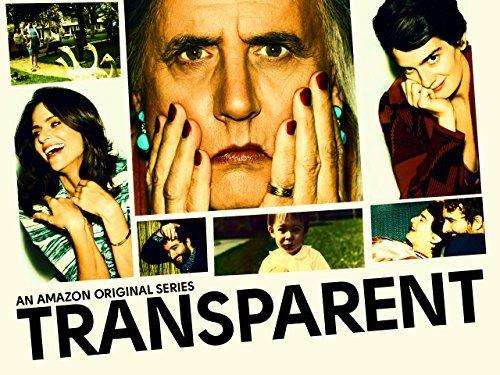News
News
Are These Shows Too Jewish? Maybe Not…
March 9, 2016 | General News

This is the first of several posts that will take a look at Jewish content, influence, and authorship in mainstream culture today. For my first foray, I am going discuss two TV series currently streaming on Amazon Prime that are, perhaps, as Judeo-centric as American television can be. What’s more, they are both hugely entertaining.
Transparent
A multi-award winner, “Transparent” is the story of paterfamilias Mort Pfefferman who decides, at retirement age, to transition to Maura Pfefferman, the woman he has always been. If you have yet to screen creator Jill Soloway’s comedy drama, I encourage you to give it a try. The title, which of course refers to Maura’s journey as both a parent and a transgender woman, is much bigger in its scope. Because this is one TV show that holds virtually nothing back both in terms of what its storytelling uncovers and what it displays to the screen. Based in part on Soloway’s father’s own transgender journey, “Transparent” is more of an ensemble show that gives everyone in the excellent cast equal time in the spotlight.
As the episodes transpire, we learn that the Pfeffermans, most of whom fled Berlin in 1933, had a transgender ancestor who was persecuted in the Nazi repression that followed Hitler’s ascension. From family relationships to marital infidelities to shifting gender roles to religious rediscovery(!), the plotlines and the character development reward the viewer with a rich tapestry of personalities and predicaments. Perhaps the most harrowing episode begins with a breast-beating (literally) Yom Kippur morning service that culminates in a tragicomic break-fast. Although many cast members are not Jewish, Jeffrey Tambour as Mort and Judith Light as Mort’s wife Shelly, serve up a heaping platter of Yiddishkeit. Ironically, actress Kathryn Hahn, who plays a very convincing Rabbi Raquel Fein, is not.
“Transparent” has been honored for writing, acting and directing by the Primetime Emmys, the Golden Globes, the Screen Actors Guild, the Critics’ Choice Awards, and the GLAAD Media Awards, to name just a few.
Please note that full frontal nudity, explicit sexuality, and strident kvetching make frequent appearances.
The Man in the High Castle
By my count, at least eight short stories from science fiction author Philip K. Dick have been adapted for the screen. Among the more prominent were “Blade Runner,” “Total Recall,, “A Scanner Darkly,” and “Minority Report.” In life, Dick grappled with various mental health issues, the fallout from five marriages, and the sad fact that, although he was a science fiction superstar, the genre paid rather poorly. “Blade Runner,” released in 1982 a few months after his death at age 53, has become a classic.
The Man in the High Castle, published in 1962, won the Hugo Award for best science fiction novel in 1962. The story is set in an alternate reality where the U.S. has been defeated by the Axis powers, and has been split into two entities, one ruled by the Third Reich, the other by the Japanese Empire.
In the TV adaptation, both occupiers are predictably cruel. Nazi racial policies are in full force, and the Jewish people, referred to as “the Semites” by their occupiers, have been forced underground. Where Jewish content is full frontal – both literally and figuratively – in “Transparent,” it emerges subtly in “The Man in the High Castle.” A resistance of sorts operates in both occupation zones. Many of the resistors are Semites who identify each other with the secret phrase “to life.” No translation necessary. In the American Reich, the aged, the infirm, and the intellectually challenged are incinerated on alternate Thursdays. In the Pacific States, the Kempeitei, a Gestapo-like arm of the Imperial Japanese Army, institutes its own reign of terror. In between lies a neutral zone reminiscent of the “anything goes” atmosphere that defined the film “Casablanca.”
British actor Rupert Evans portrays Frank Frink, an average Joe who just happens to have a Jewish grandparent. Rufus Sewell, another Brit, is equally good as the relentless American Obergruppenführer John Smith. Frank is gradually drawn to the resistance after his girlfriend disappears on a secret mission to combat the occupiers. When the Kempeitei gases Frank’s sister and her two young children, he commits himself fully to the struggle to overthrow the Empire.
Visually, the series has a noir-ish, melancholy feel, as befits a show created by Frank Spotnitz, best known for his stewardship of “The X-Files.” It follows the exploits of Frank and several other characters, each desperate to reach the mysterious man in the high castle. From his secret lair, he has secretly circulated a series of newsreels depicting a world where the Allies were victorious in crushing the Axis powers. In their search for a better world, our heroes are willing to die for their ideals and the people they love.
While this show features no kvetching of any kind, it abounds in idealism, faith and a willingness to sacrifice oneself for the greater good. And isn’t that the most Jewish value of all?
Steve Klausner has written extensively on popular culture. As an advertising creative director, had a background in the promotion of feature films and TV network programming. He is the author of several short films, and his feature, “Headspace” won best screenplay honors from the New York Horror Film Festival.
News by category
Contact
Please direct all press inquiries to Central’s Communications Department via email at .(JavaScript must be enabled to view this email address), or phone at (212) 838-5122 x2031.